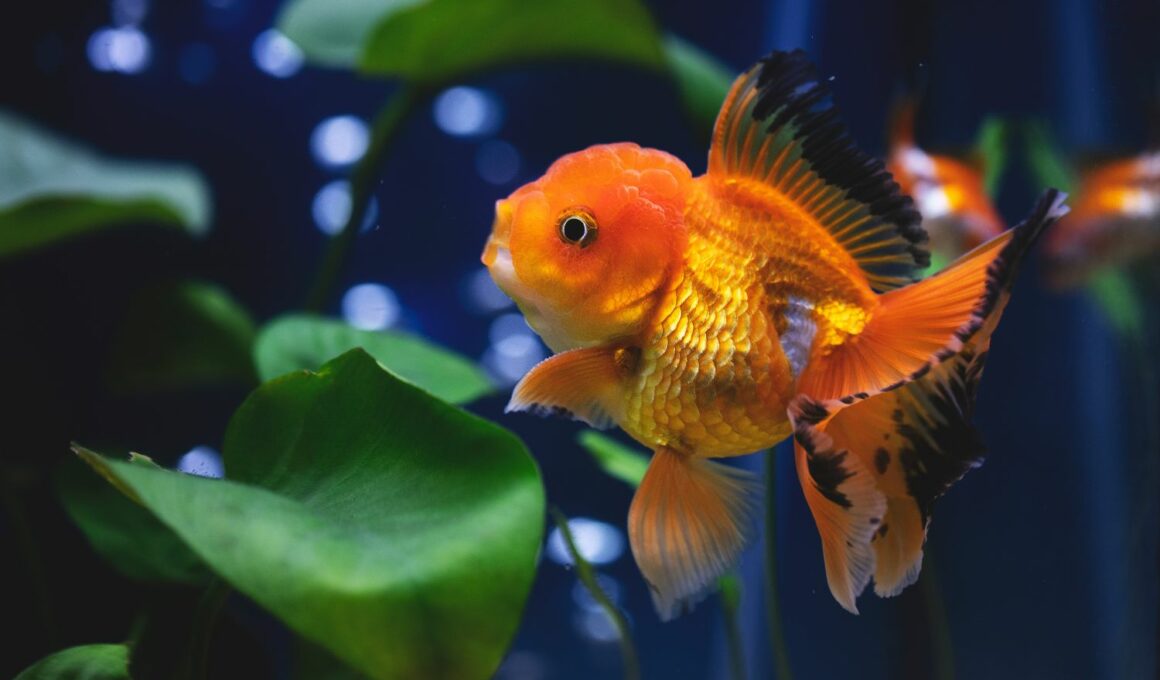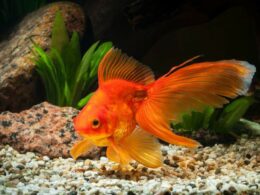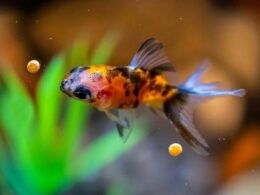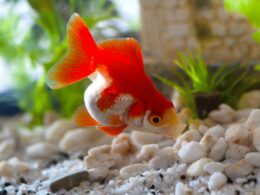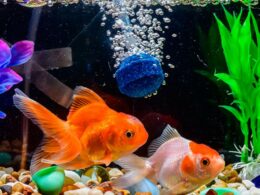In this article Show
If you’re anything like me, you’ve spent countless hours peering into your home aquarium, marveling at the grace and beauty of your finned friends. Goldfish, with their vibrant colors and lively demeanor, have always been among the favorite choices for both novice and experienced fish keepers alike.
But have you ever noticed a peculiar bump on your goldfish’s head and wondered what it could be?
Rest assured, you’re not alone. Many fish enthusiasts find themselves scratching their heads, sometimes quite literally, over this intriguing feature. It could be a natural characteristic, or it might signal something more concerning.
Let’s dive in together and demystify the tale of the goldfish bump, breaking it down into simple, easy-to-follow terms. Whether you’re new to the world of aquariums or a seasoned pro, there’s always something new to learn, and today’s topic is certainly a fascinating one!
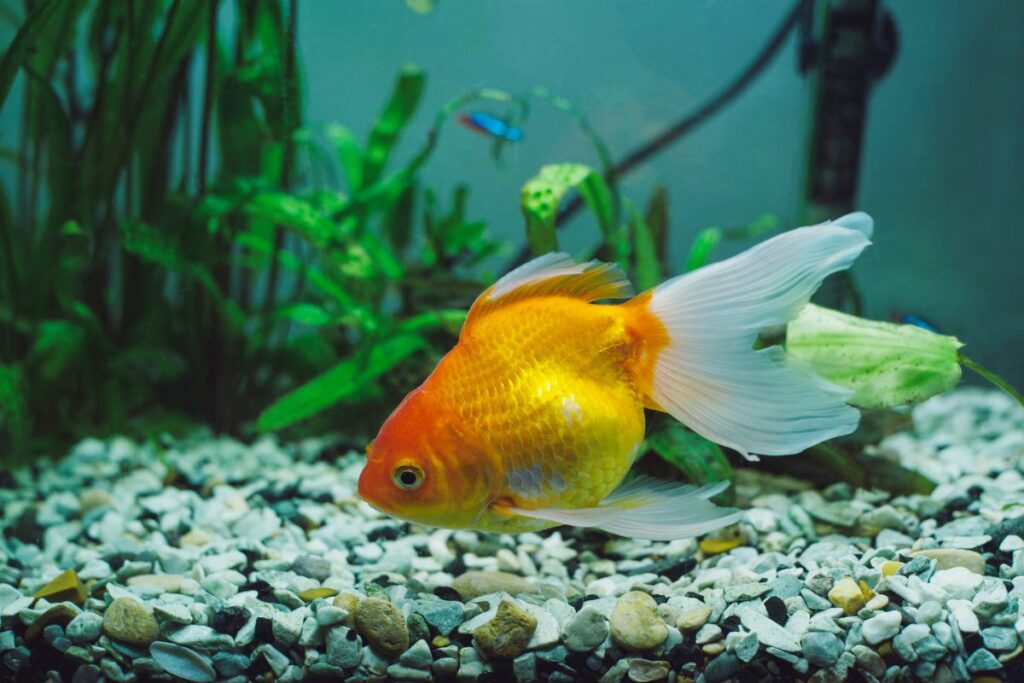
Background on Goldfish Anatomy and Varieties
Ah, the goldfish! Despite its name, this vibrant fish can come in a rainbow of colors, from shimmering oranges and yellows to pristine whites and even deep blacks. But before we delve into the mystery of the goldfish bump, it’s important to understand a bit about these fish at a fundamental level.
Goldfish, belonging to the Carassius auratus species, are freshwater fish that originated from East Asia. They have a typical fish anatomy: a streamlined body, dorsal fins, gills for respiration, and scales that cover their body.
While the basic anatomy remains consistent, what sets different goldfish apart are their size, color, fin shapes, and, yes, sometimes those unique bumps on their heads.
Diving into the Goldfish Varieties
Over the centuries, selective breeding has led to the birth of several goldfish varieties, each with its own distinctive features:
- Common Goldfish: As the name suggests, this is the most basic form, closely resembling their wild ancestors. They have a slender body and are quite hardy.
- Comet Goldfish: Recognized by their long, flowing tail fins. These are quite popular in outdoor ponds.
- Fancy Goldfish: A broad category that includes many popular breeds. Some to note are:
- Oranda: Known for the “wen” or the raspberry-like growth on their heads.
- Ryukin: They have a hump behind their head and a deep body.
- Lionhead: Missing a dorsal fin and sporting a fleshy growth on its head, quite similar to the Oranda.
- Telescope Eye: Recognizable for their protruding eyes.
- Bubble Eye: As intriguing as it sounds, these goldfish have fluid-filled sacs under their eyes.
- Shubunkin: These possess a calico pattern, with a mix of colors splashed on their body.
What is the Bump on a Goldfish’s Head?
If you’ve ever come across a goldfish with what looks like a fancy, fleshy hat or growth on its head, you’re not alone in your fascination. This distinctive characteristic has piqued the curiosity of many an aquarist. So, what is this mysterious bump, and why do only certain goldfish have it?
The bump, commonly referred to as the “wen” or “head growth”, is essentially a collection of fleshy outgrowths. Think of it as a series of soft, squishy, and sometimes wrinkly tissues that cover the top of the fish’s head, often extending to the cheeks and gill plates.
This wen is made up of a fold of skin, which is thick and can give the goldfish a rather distinctive, charming appearance.
Goldfish Breeds With The Wen
Not all goldfish come adorned with this fleshy crown. The wen is a characteristic feature of certain “fancy” goldfish breeds, including but not limited to:
- Oranda: Often the first breed that comes to mind when talking about wens, they can have impressive growths that set them apart in any aquarium.
- Lionhead and Ranchu: Both these breeds have a similar appearance with pronounced head growth, with the Ranchu being a bit more rounded and the Lionhead often lacking a dorsal fin.
- Tosakin: This less common variety also displays a Wen, though it’s better known for its unique tail fin.
Nature of the Growth
For breeds that naturally have the wen, this growth starts appearing as they age, becoming more pronounced in adulthood. The texture and appearance of the wen can vary from fish to fish. Some might have a smooth, subtle wen while others boast a more pronounced, raspberry-like texture.
Is It Harmful?
For breeds where this is a natural feature, the wen does not harm the fish or impede its day-to-day functions. However, in some rare cases, if the wen overgrows, it might cover the eyes or gills. In such scenarios, a vet or an experienced fish specialist might advise trimming it for the fish’s comfort.
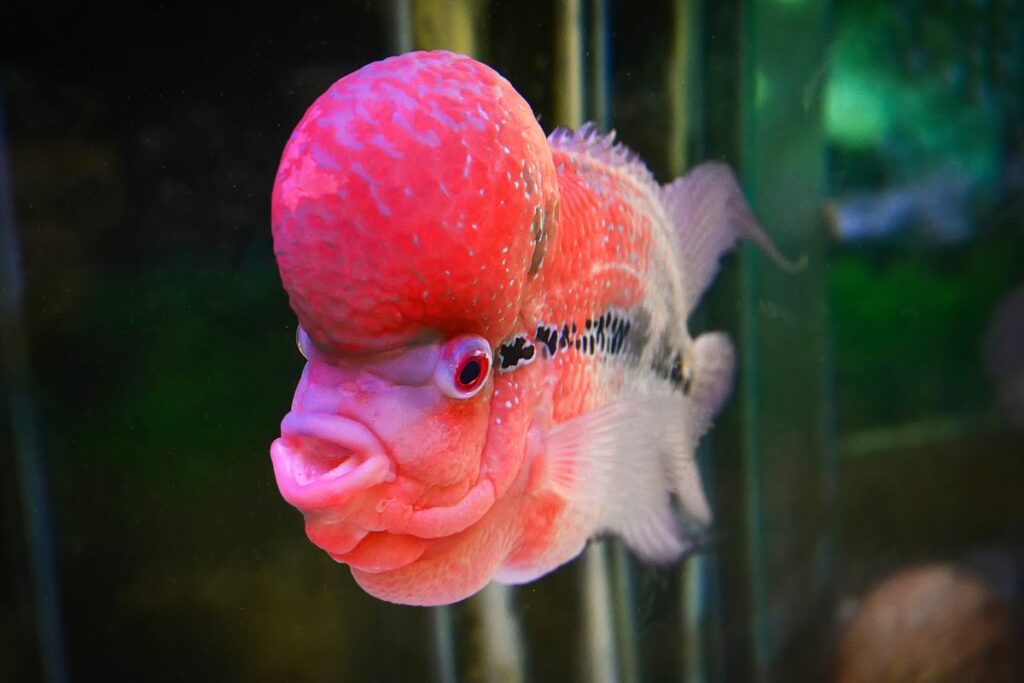
Natural Vs. Abnormal Bumps
The world of goldfish is filled with variety, both in appearance and behavior. But as an aquarist, it’s crucial to distinguish between what’s natural and what might be a cause for concern. When it comes to the bumps on a goldfish’s head, this distinction can be a lifeline to ensuring the well-being of your aquatic companion.
Natural Bumps: The Wen
Certain goldfish breeds have a natural growth on their head known as the “wen.” It’s a soft, fleshy, often wrinkled skin outgrowth that can vary in size and texture. Breeds like Oranda, Lionhead, and Ranchu naturally develop this feature as they mature.
Characteristics of a Natural Wen
- Uniform Growth: The wen grows uniformly and doesn’t suddenly appear as a distinct lump.
- Soft Texture: It’s generally soft to the touch (though handling your fish often isn’t advised).
- No Signs of Distress: Fish with a natural wen behave normally, eat well, and show no signs of discomfort or abnormal swimming patterns.
Abnormal Bumps: A Sign of Concern?
Not all bumps on a goldfish’s head are natural wins. If you spot a bump on a goldfish breed that doesn’t naturally have a wen, or if there’s a sudden, abnormal growth on a fish that already has a wen, it’s time to pay closer attention.
Characteristics of Abnormal Bumps
- Rapid Growth: Unlike the slow, uniform growth of a wen, abnormal lumps might appear suddenly and grow rapidly.
- Distinct Appearance: They may have a different color, look inflamed, or even have a pus-filled appearance.
- Signs of Distress: The fish may frequently rub against objects, show loss of appetite, or exhibit other signs of discomfort.
- Isolated Growth: While a wen typically covers a larger portion of the head, abnormal lumps might be isolated in one area.
Possible Causes of Abnormal Bumps
- Injuries: Bumps might result from fights with other fish or injuries from aquarium décor.
- Tumors: Both benign and malignant tumors can manifest as bumps.
- Infections or Parasites: Bacterial, fungal, or parasitic infections can lead to lumps or swellings.
- Water Quality Issues: Poor water conditions can result in various health problems, including skin abnormalities.
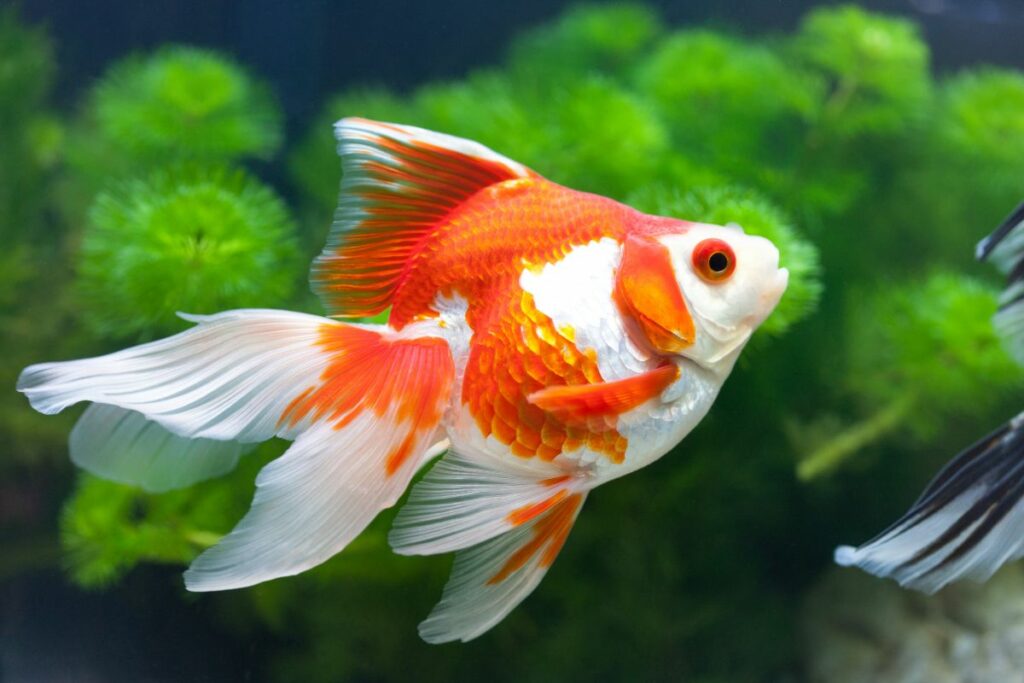
Causes of Abnormal Bumps
A sudden, unexpected lump on your goldfish can be concerning for any dedicated aquarist.
While the natural wen is a fascinating aspect of certain goldfish breeds, abnormal bumps can signal a variety of underlying issues. Let’s delve into the potential causes behind these unexpected growths.
1. Injuries and Trauma
- Source: Goldfish can get injured by sharp or rough-edged aquarium decorations, aggressive tank mates, or even during netting and transportation.
- Appearance: Injuries often present as scrapes, cuts, or bruises. However, if the injury leads to swelling, it can appear as a raised bump.
- Prevention: Ensure a safe tank environment with smooth-edged decorations and compatible tank mates. Handle your goldfish with care, especially during transfers.
2. Trauma
- Source: Like many animals, goldfish can develop tumors. These can be benign growths or malignant cancers.
- Appearance: Tumors typically appear as solid masses, which can vary in color. They might be the same color as the fish’s skin, or they can be dark, discolored, or even translucent.
- Treatment: It’s challenging to treat tumors in goldfish. However, if the tumor is externally located and accessible, a veterinarian might consider surgical removal. Always consult with an expert if you suspect a tumor.
3. Parasites and Infections
- Source: Goldfish can be affected by internal and external parasites. Additionally, bacterial or fungal infections can also manifest as external bumps.
- Appearance: Parasitic infections, like anchor worms or fish lice, can be visible on the fish’s body. Bacterial or fungal infections might present as white, fuzzy, or cotton-like growths.
- Treatment: Over-the-counter treatments are available for many common parasites and infections. However, it’s crucial to diagnose the specific cause and treat it accordingly. Quarantine affected fish to prevent the spread to other tank inhabitants.
4. Water Quality Issues
- Source: Poor water conditions, such as high ammonia, nitrite, or nitrate levels, can stress fish and make them susceptible to diseases.
- Appearance: While poor water quality can manifest in various ways, including faded color, lethargy, or clamped fins, it can also lead to skin issues or growth.
- Prevention and Treatment: Regular water testing, timely water changes, and maintaining a clean tank environment are essential. If water quality issues are detected, address them immediately to prevent further complications.
5. Cysts and Abscesses
- Source: Cysts are fluid-filled sacs, while abscesses are localized collections of pus due to bacterial infections.
- Appearance: Both might appear as raised lumps on the goldfish’s body. An abscess might look redder and more inflamed compared to a cyst.
- Treatment: While cysts might sometimes resolve on their own, abscesses require prompt attention. Draining and treating an abscess should be done by a professional to prevent complications.
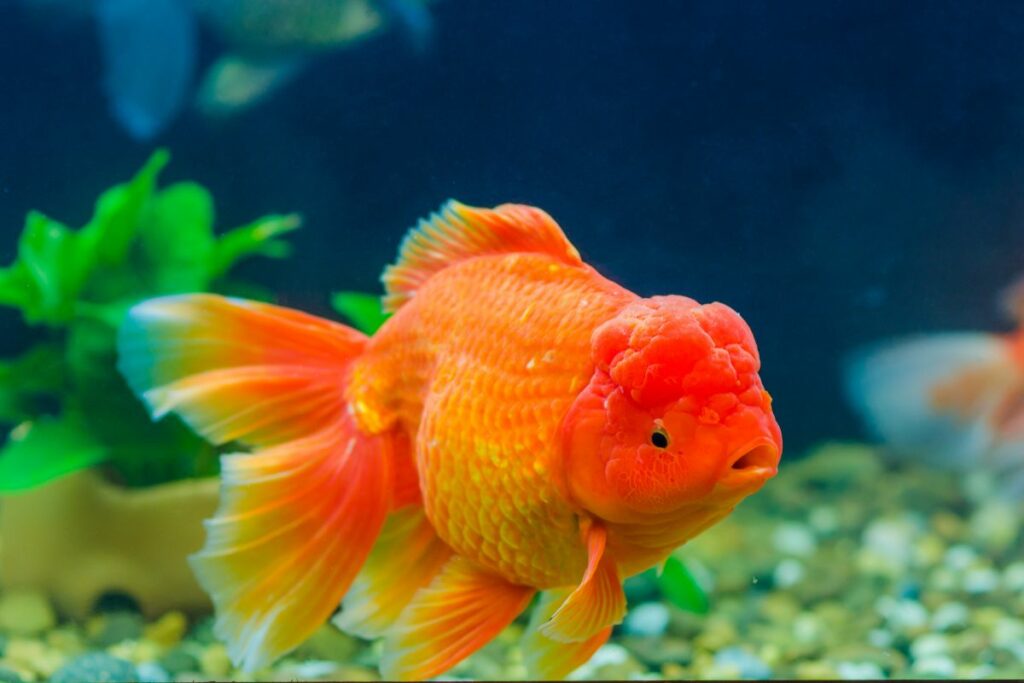
Treatment and Prevention of Abnormal Bumps on Goldfish
Unraveling the causes of abnormal bumps is just one step. Once identified, it’s essential to approach treatment promptly and take steps to prevent future occurrences. Here’s a comprehensive guide on treating and preventing those unwarranted lumps.
1. Treatment
The following are ways to treat abnormal bumps on Goldfish;
Injuries and Trauma
Remove any aggressive fish or sharp objects from the tank. Isolate the injured goldfish if necessary. Add a mild antiseptic like aquarium salt (follow dosage recommendations) to the water to prevent infections. Ensure clean water conditions to expedite healing.
Tumors
Consult a veterinarian specializing in fish health. Depending on the tumor’s nature and location, the vet might recommend observation, surgical removal, or, in some unfortunate cases, euthanasia if the fish is suffering.
Parasites and Infections
Isolate the affected fish in a quarantine tank. Identify the specific parasite or infection. Over-the-counter treatments, such as antiparasitic or antibacterial medications, are available. Follow dosage and treatment duration strictly.
Water Quality Issues
Test water parameters using an aquarium test kit. Based on the results, take corrective measures. This might involve water changes, adjusting pH, or reducing ammonia, nitrite, and nitrate levels. Use water conditioners if necessary.
Cysts and Abscesses
Consult a veterinarian or fish health expert. While cysts may resolve on their own, abscesses might need to be drained and treated with antibiotics.
2. Prevention
To prevent abnormal bumps from raising its ugly head in your goldfish, the following are precautions to take;
Regular Monitoring
Check your goldfish routinely for any signs of abnormalities. Early detection can make treatments more effective.
Quarantine New Fish
Before introducing new fish into your main tank, keep them in a quarantine tank for 2-4 weeks. This helps in identifying and addressing potential health issues they might bring.
Maintain Water Quality
Use an aquarium test kit to regularly check water parameters. Replace 20-30% of the tank water weekly or as required. Provide a varied and balanced diet to ensure your goldfish’s immune system is robust.
Safe Environment
Ensure the tank is of appropriate size for the number and size of fish. Use smooth-edged decorations to prevent injuries. Ensure compatibility among tank inhabitants to reduce aggression. At the first sign of any abnormality, take prompt action. This can prevent the spread of diseases and enhance recovery chances.
Stay Informed
Continually educate yourself about goldfish health and best care practices. Joining local aquarium clubs or online forums can be beneficial.
Conclusion
Abnormal bumps on goldfish can be concerning, but understanding their causes and knowing how to address them can make all the difference. Through regular monitoring, maintaining water quality, and providing a safe environment, you can minimize risks for your aquatic friends.
When in doubt, seek expert advice. Ultimately, a proactive and informed approach ensures your goldfish live healthy, vibrant lives.






